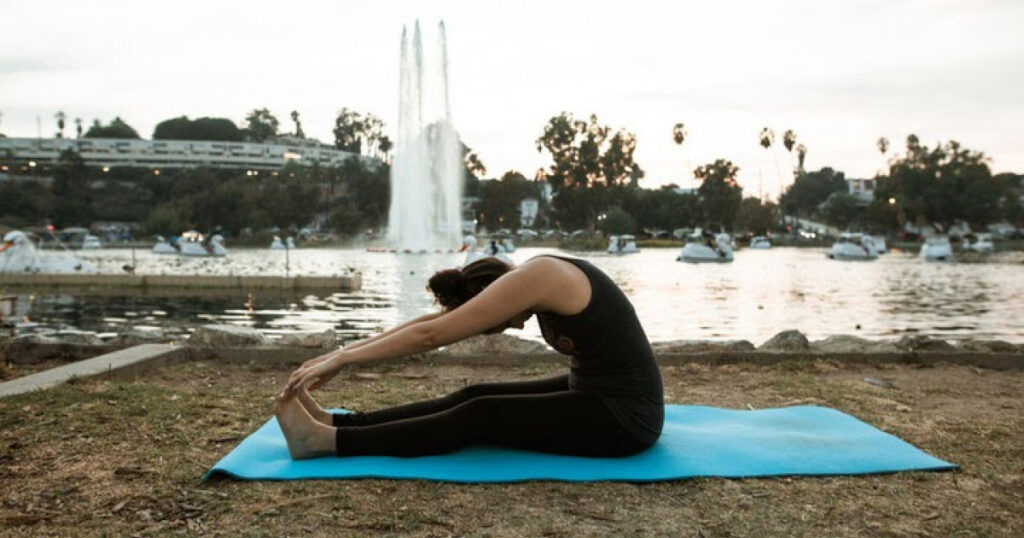Hatha Yoga is more than just physical exercise; it’s a holistic philosophy that aims to bring harmony between the body, mind, and spirit. Rooted in ancient Indian tradition, Hatha Yoga offers a comprehensive approach to health and well-being, encompassing physical postures, breathing techniques, meditation, and ethical principles. In this quick guide, we’ll delve into the essence of Hatha Yoga philosophy, its principles, practices, and benefits.
Introduction to Hatha Yoga Philosophy
Hatha Yoga traces its origins back to ancient texts like the Hatha Yoga Pradipika and the Yoga Sutras of Patanjali. The word “Hatha” is derived from Sanskrit, meaning the union of “ha” (sun) and “tha” (moon), symbolizing the balance of opposing forces within the body.
Origins and History
Hatha Yoga emerged as a branch of yoga in medieval India, with roots in Tantric traditions. It gained popularity as a means of preparing the body for meditation and spiritual awakening.
The Core Principles of Hatha Yoga
Physical Postures (Asanas)
Asanas are the foundation of Hatha Yoga practice, comprising a series of physical postures designed to strengthen the body and enhance flexibility. Each asana has specific benefits for physical and mental well-being.
Breathing Techniques (Pranayama)
Pranayama involves conscious control of the breath, regulating the flow of vital energy (prana) within the body. Through pranayama practices, practitioners can calm the mind, increase oxygen supply, and promote relaxation.
Meditation and Mindfulness
Meditation is an integral part of Hatha Yoga, fostering inner peace, clarity, and spiritual growth. Mindfulness techniques help practitioners cultivate awareness of the present moment, reducing stress and enhancing mental focus.
Understanding the Union of Body, Mind, and Spirit
Hatha Yoga emphasizes the interconnectedness of the physical, mental, and spiritual aspects of human existence. By harmonizing the body, mind, and spirit, practitioners can experience profound states of inner balance and serenity.
Balancing the Energy Channels (Nadis)
Nadis are subtle energy channels through which prana flows in the body. Hatha Yoga practices aim to clear blockages in the nadis, promoting the smooth flow of energy and vitality.
Awakening the Kundalini
Kundalini is the dormant spiritual energy located at the base of the spine. Through advanced Hatha Yoga techniques, practitioners can awaken the kundalini and experience heightened states of consciousness.
The Importance of Alignment and Balance
Alignment and balance are fundamental principles in Hatha Yoga practice, ensuring optimal posture and energy flow. By aligning the body correctly, practitioners can prevent injuries and maximize the benefits of each asana.
Hatha Yoga as a Path to Health and Well-being
Hatha Yoga offers a holistic approach to health, addressing physical, mental, and emotional well-being. Regular practice can improve flexibility, strength, and stamina, while reducing stress and enhancing overall vitality.
Cultivating Self-awareness and Self-discipline
Hatha Yoga encourages self-reflection and introspection, fostering greater self-awareness and self-discipline. By observing thoughts and emotions without judgment, practitioners can cultivate inner peace and emotional resilience.
Overcoming Challenges in Hatha Yoga Practice
Like any discipline, Hatha Yoga has its challenges, including physical limitations, mental distractions, and fluctuating motivation. Through perseverance and patience, practitioners can overcome obstacles and deepen their practice over time.
Integrating Hatha Yoga Philosophy into Daily Life
Hatha Yoga is not confined to the yoga mat; its principles can be applied to everyday life. By embodying mindfulness, compassion, and non-violence, practitioners can lead more balanced and fulfilling lives.
Exploring Different Styles and Approaches
Hatha Yoga encompasses a diverse range of styles and approaches, from gentle and restorative practices to dynamic and vigorous sequences. It’s essential to find a style that resonates with your unique needs and preferences.
The Role of a Hatha Yoga Teacher
A skilled Hatha Yoga teacher plays a crucial role in guiding students on their yoga journey, offering personalized instruction, encouragement, and support. A good teacher creates a safe and nurturing environment for exploration and growth.
Common Misconceptions about Hatha Yoga
Despite its many benefits, Hatha Yoga is often misunderstood. Some people believe it’s only for the young and flexible, while others see it as a purely physical practice devoid of spiritual depth. In reality, Hatha Yoga is accessible to people of all ages and abilities, offering a path to holistic well-being.
Benefits for Physical Health
Regular practice of Hatha Yoga can improve posture, strengthen muscles, increase flexibility, and alleviate common ailments like back pain and joint stiffness. It also enhances cardiovascular health, boosts immune function, and promotes overall longevity.
Benefits for Mental Health
Hatha Yoga has profound effects on mental health, reducing stress, anxiety, and depression. It promotes relaxation, enhances mood, and cultivates a sense of inner peace and emotional resilience.
Conclusion: Embracing Hatha Yoga Philosophy
In conclusion, Hatha Yoga philosophy offers a comprehensive approach to health and well-being, integrating physical, mental, and spiritual practices. By embracing its principles and incorporating them into our daily lives, we can cultivate balance, vitality, and inner peace.



